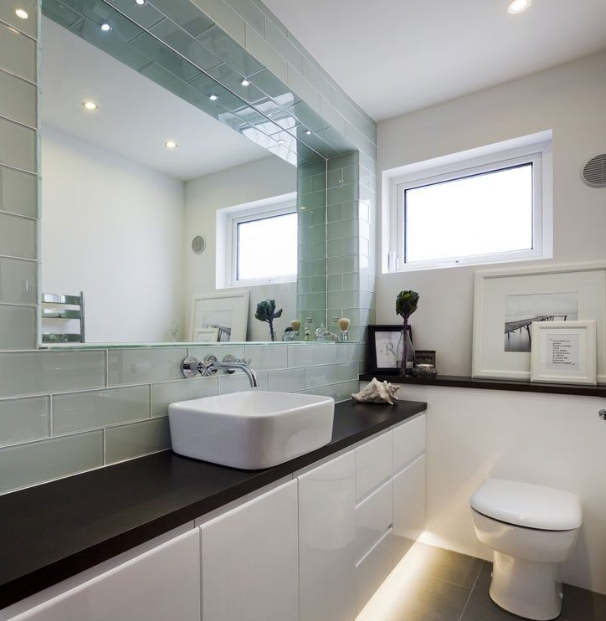When showing a house to a prospective buyer we have found that lighting can be a very influential factor when viewing a property. Natural light is something that homeowners can’t get enough of however, in some properties it can be hard to achieve this (especially in basement or ground floor apartments). Lighting plays an essential role in highlighting your homes features and functionality as well as ultimately making your property more attractive to a prospective buyer.
Our Sales Manager, Nick Sajid has observed that:
“In my experience good lighting can make a big difference in the presentation of a flat or house for sale. I have found that prospective buyers respond well to imaginatively lit homes. Some thought and creativity in the lighting of your property will always pay dividends”
It is important to understand the space that you are hoping to optimise using lighting. In rooms such as bathrooms and kitchens functionality is key, whereas more informal living spaces (bedrooms, lounge and sitting room) present an opportunity to show personality and character. We have put together a step-by-step guide on how lighting can best accentuate each room in your home.
Hallway:
Even if your hallway is a light-trap, lighting can be a great way to guide guests through your home, creating a clear direction and flow to the space. We recommend using pendant lights (see below) as they create a sense of symmetry and a directional flow through your home. Pendant lights are also a great way to add a personal stamp to your hallway; pendant lamps are available in a wide range of designs and materials ranging from glass and wicker pendants to metal cages. This could also be a great opportunity use a bare bulb pendant which create a soft urban light.

Kitchen:
The kitchen is one of most functional rooms in the home therefore we recommend having practical lighting. Spotlights are a fantastic way to flood a space with light and by adding a dimmer these lights are perfect for a kitchen/dining space.
Interior Designer Charlotte Boyd comments that: “If your kitchen has an island or bar some more direct lighting will add another dimension to the room and will also give a softer light if you are entertaining. Lighting helps to create atmosphere, with a kitchen you generally want to have a light airy space as this is an area that is used every day and you do need to see what you’re doing!”

Bathroom:
Rather like the kitchen, the bathrooms primary purpose is practical and the lighting used needs to reflect this functionality. Again, spotlights are a great way to inject fuss-free light into your bathroom. As bathrooms can often be small we advise using tiles and paints that will reflect light and create an illusion of space. As well as a light colour pallet, mirrors are essential when using light to give the impression of extra space (you can accentuate this by adding a backlight to a mirror).
Charlotte Boyd notes that: “Mirrors are a great way to bounce light around a room which, in turn, makes the space appear larger. However, lights around mirrors must be correctly places as reflections of bulbs can look careless and untidy; direct light into a mirror never looks good.”

Living room/ lounge:
How you choose to light this key living space is very personal we think the lounge is the perfect place to mix and match lampshades, lamps and lanterns. We recommend using this place to display a feature light in the centre of the room; this need not be an 18th century chandelier however this light should and will set the tone for the space.

Choose a light that complements the overall theme of the space while also providing a soft to medium light as it is easy to add lamps to highlight other areas of the room. Lamps are a fantastic way to add different levels and areas of intensity in a room; you can mix and match styles, shades and wattage to create a soft and deeply personal space that prospective buyers will be able to envision the many ways that the space can be utilised. Again, mirrors are a great for reflecting light and making your living room appear more spacious.

Bedrooms:
The preface for bedroom lighting is similar to a living room however it is important to remember that there is also a practical side to lighting a bedroom. A bedside light, in our opinion, should not be ignored, they highlight how the space can be used for activities such as reading and demonstrate the usability of the room. For bedrooms, we recommend using a selection of lamps paired with a feature light as this is softer than the more functional day-time rooms.
When it comes to preparing your home for a viewing it is important to consider how your lighting choices may impact a prospective buyer’s impression of your home. By simply highlighting features and accentuating the space you have with a careful mix of lighting, mirrors and colour palate you will be giving your home the best chance of reaching beyond market value.
Unique local market insight, expert advice and personal service, from a team with £5bn of London home career sales.